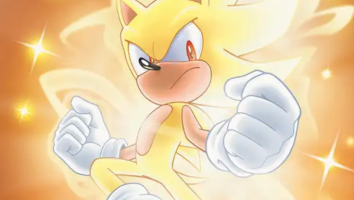Rick Siggelkow’s portfolio of credits includes stints as co-creator/co-producer of Shining Time Station (the series that showcases veteran preschool icon Thomas the Tank Engine) and creator/executive producer of Noddy, a show based on a 40-year-old U.K. book property. Although both of these properties had existed for decades in other forms, Siggelkow was instrumental in bringing them back from the Dark Ages for modern kid viewers. As VP of the children’s division at BBC Worldwide Americas, Siggelkow is currently working as creator/executive producer on a new series called Captain Lighting, which is sheduled to debut this fall on BBC1 in the U.K.
Where do you go to look for new concepts to adapt into TV?
I mine my own past quite a bit-I don’t think I ever really grew up because I find that I can imagine how things would have looked at age five or seven or eight quite easily. Most creative processes begin in a person’s own past or personal experiences and then expand from there. I use my kids a lot too. For example, the other day I was driving my daughter and her friends to dance class, and one of them said, ‘You know the trouble with cartoons? They never change their clothes.’ I know that technically, cartoons don’t change their clothes because it’s a pain in the neck to go back and reink, but she didn’t know that. I think that’s a really interesting insight-I don’t know if I’ll ever put it to use, but it’s the type of thing I write down. To test ideas, I have a deal with a local elementary school principal whereby in return for doing a presentation about making TV shows once a year, he lets me come in and use classes as focus groups.
What is the best idea a kid has ever given you?
In Captain Lightning, there’s a character named Googler who has little puppets for hands. The idea was that he would use these puppets to hypnotise people. I was showing the character to some kids in the neighborhood, and one little boy said, `Those little puppets at the end of his arms, they must fly off and chase people and bite them and then fly back on to his arms.’ It was a crazy suggestion, but I used it because it was so right, and it is one of the things that make the Googler character unique.
Many of your TV concepts mix live action with animation. Why do you think this mix works for a children’s audience?
I think it works because the line between fantasy and reality for kids is thin. I like mixing the two together because it takes the fantasy element into the real world. It’s a nice transition for kids who are using fantasy to try and come to terms with the larger world.
What do you do to get your creative juices flowing?
I like writing in the morning best, when it’s very quiet. I surround myself with familiar things-pictures, an old desk that I’ve dragged around with me all my life. If I have artwork from the series, I’ll tape it up to the wall so I never take my eyes off it.
When I was writing Noddy and I felt like I’d reached a dead end, I would get in the car and drive over to a nearby antique toy shop to hang around with the owner. I would play around with old toys and chew the fat with the guy. Sometimes that would break the log jam. On Captain Lightning, because it’s very heavily based on a video game, I find I take a lot of breaks and I go play video games to help keep the juices flowing.
If you could be transported into any of the fictional TV worlds you have created, which would you go to and why?
I’d probably go to the world of Noddy because there’s always a happy ending and everyone ultimately gets along with each other. When Betty White came on the set to do a Christmas special, she said at the end of shoot, ‘Can I move to this town?’ I’d also love to work in that toy store.





















